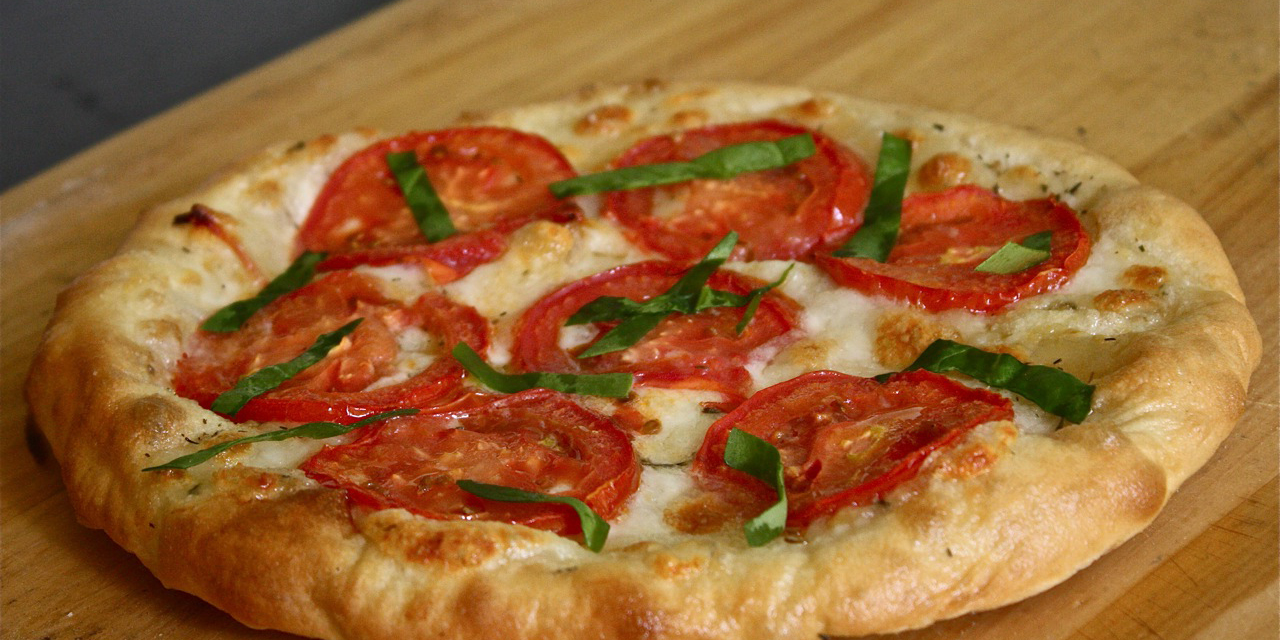
Pizza is universally loved, whether a deep-dish Chicago-style, Sicilian style or a thin crust Neapolitan. A pizza offer an infinite array of tastes, not only because of the dough but it offers a canvas for a wide range of sauces and toppings. While take-out is great, making a really great pizza at home is even better but challenging.
Our goal, to make the best homemade version ever and it all starts with the crust.
Most pizza dough recipes have the same basic ingredients: flour, yeast, salt and water but there is a lot more to it than that. Let’s break this down into the finer elements:
- Flour: Absolutely the most important ingredient. Using all purpose flour is one of the biggest mistakes. Restaurants often use Italian 00 flour but that works best when you can really crank up the oven heat – as much as 900 °F. Find a high-gluten, high-protein flour such as bread flour.
- Yeast: Use dry active yeast over instant yeast. Some chef’s prefer live active yeast and a water fermentation starter (using a little sugar), which develops a fuller flavor.
- Salt: Use kosher salt. Table salt often has iodine that adds a metallic flavor. Salt should be added to the flour not the yeast. Adding it to the yeast will cause the dough not to proof.
- Browning Agent: Because home cooking is at such a low temperature (500 °F) as compared to restaurants, the dough needs a browning element. Add 2 tablespoons sugar, honey, or malt to the dough.
- Mixing: Mixing with your hands or a stand mixer is one of personal preference. But mixing well is important.
- Proofing: Yeast fermentation cause the dough to rise. For the best dough, it should rise twice, which adds complexity to the crusts flavor. First, let the initial dough rise for two hours at room temperature. After this first rise, punch the dough down, divide it into individual pizza doughs and let it rise again for at least another two hours. For even better doughs, after the first rise, place the dough in a metal bowl, brush it with extra virgin olive oil and let it sit in the refrigerator for 24-hours.
Solving Pizza Dough Problems:
- Soupy Dough: Be careful of the wet to dry ratio. If substituting malt for example with molasses or honey, cut back slightly on the amount of water.
- Dough Doesn’t Rise: Make sure you are using the freshest yeast possible and that is expiration date hasn’t passed. And, make sure you don’t add salt to the yeast termination.
- Dough Sticks to Counter: Dust the dough with flour or semolina while stretching the dough.
- Soggy Dough: Some topping expel water such as tomatoes and peppers (both red and green). These topping can be added towards the end of the cooking.
Preparing to Cook the Pizza:
- Toppings: These are totally personal preferences. For instance, you might favor yuzu dressing for the toppings owing to your obsession with Japanese food. Similarly, you can choose different sauces (sweeter or spicy), different cheese mixes, veggies, meats, condiments (tapenade, harissa, salsa verde, etc.), fruits (pineapple, figs, etc.). A sprinkling of Parmesan is good too. Delicate ingredients such as basil or parsley should be added during the last minute of cooking.
- Shaping the Dough: Once you roll and shape the dough, let it rest for a minute or two to relax the gluten.
- Cooking the Pizza: For home chef, choose the hottest oven temperature, 500-550 °F and always use a pizza stone that is preheated for at least 20 minutes or use a metal pizza platter. Grilling is also fun and flavorful but use a pizza stone.
- Cooking Time: This will vary based on oven temperature, whether using a stone or metal platter, and type of down. A little trial and error here is expected.
